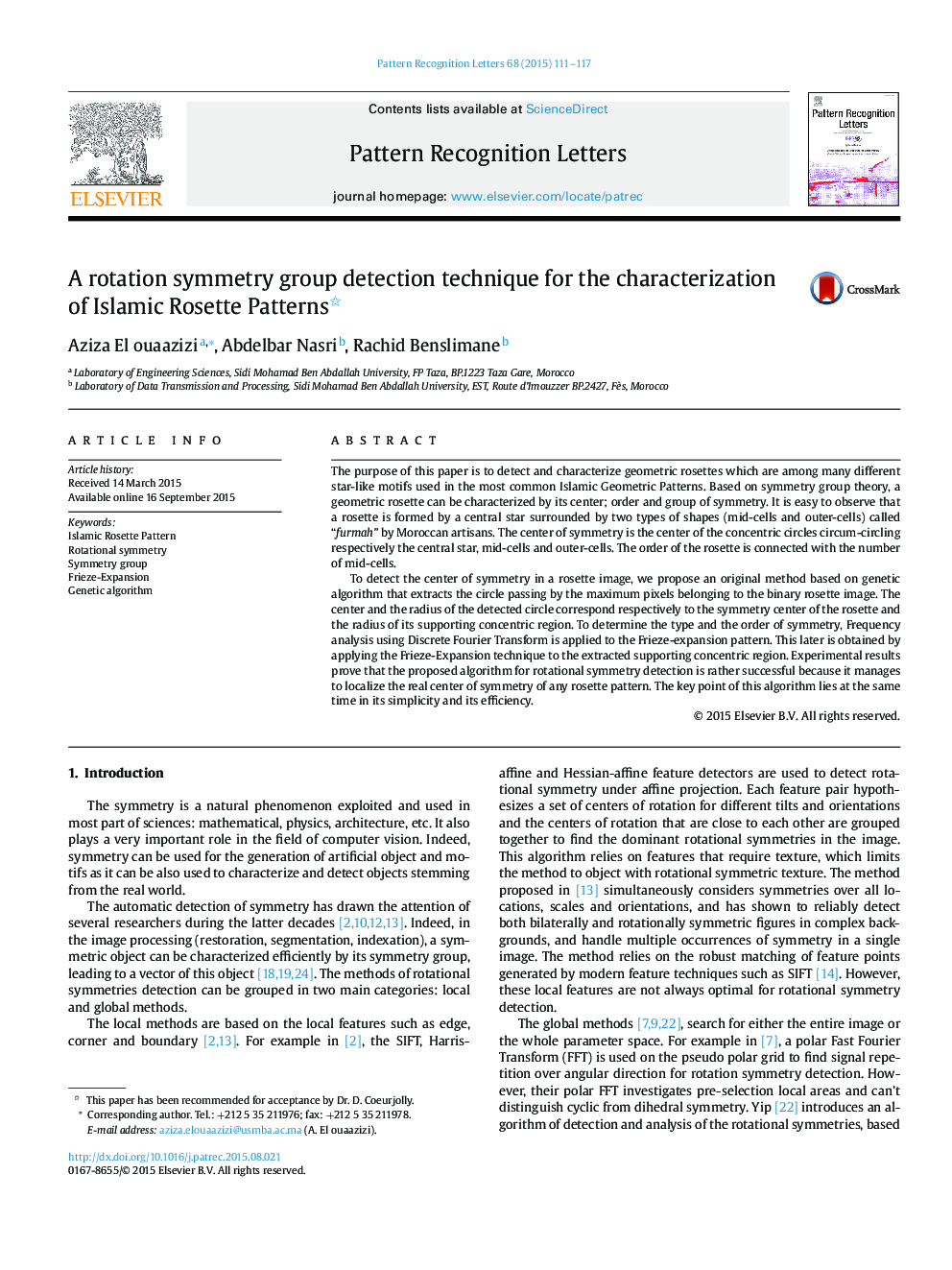| Article ID | Journal | Published Year | Pages | File Type |
|---|---|---|---|---|
| 536223 | Pattern Recognition Letters | 2015 | 7 Pages |
•Characterization of Islamic Rosette Patterns based on symmetry groups theory.•New technique for finding the rotational symmetry center of rosette patterns.•Group and order of symmetry is given by application of Frieze-Expansion technique.
The purpose of this paper is to detect and characterize geometric rosettes which are among many different star-like motifs used in the most common Islamic Geometric Patterns. Based on symmetry group theory, a geometric rosette can be characterized by its center; order and group of symmetry. It is easy to observe that a rosette is formed by a central star surrounded by two types of shapes (mid-cells and outer-cells) called “furmah” by Moroccan artisans. The center of symmetry is the center of the concentric circles circum-circling respectively the central star, mid-cells and outer-cells. The order of the rosette is connected with the number of mid-cells.To detect the center of symmetry in a rosette image, we propose an original method based on genetic algorithm that extracts the circle passing by the maximum pixels belonging to the binary rosette image. The center and the radius of the detected circle correspond respectively to the symmetry center of the rosette and the radius of its supporting concentric region. To determine the type and the order of symmetry, Frequency analysis using Discrete Fourier Transform is applied to the Frieze-expansion pattern. This later is obtained by applying the Frieze-Expansion technique to the extracted supporting concentric region. Experimental results prove that the proposed algorithm for rotational symmetry detection is rather successful because it manages to localize the real center of symmetry of any rosette pattern. The key point of this algorithm lies at the same time in its simplicity and its efficiency.
